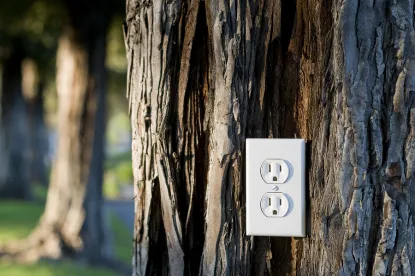CONNECTICUT PASSES LEGISLATION TARGETING 1 GW ENERGY STORAGE BY 2030
Connecticut has enacted new energy storage legislation: S.B. 952, “An Act Concerning Energy Storage” (Act). The Act establishes a target of 1 GW energy storage by 2030, preceded by interim targets of 300 MW by the end of 2024 and 650 MW by the end of 2027.
To accomplish these targets, the Act requires the Connecticut Public Utilities Regulatory Authority (PURA) to consult with various stakeholders and agencies to develop programs and funding mechanisms to incentivize energy storage deployment on the distribution system. The programs must address residential, commercial, and industrial classes of electric customers behind-the-meter and ahead-of-the-meter systems that are not customer-sited. The Department of Energy and Environmental Protection (DEEP) is authorized to issue requests for proposals to procure systems located at either the transmission or distribution level. The selection of projects will be subject to a cost-effectiveness test that DEEP must first establish, and any resulting procurement agreements will be subject to review by PURA.
Connecticut joins New York, New Jersey, California, Nevada, Massachusetts, Oregon, and Virginia as the eighth state to enact some form of energy storage target, goal, or mandate. A state-by-state guide of measures adopted by states and geared toward facilitating energy storage deployment is provided in the K&L Gates LLP Energy Storage Handbook, available here.
FERC TO ESTABLISH FEDERAL-STATE TASK FORCE ADDRESSING ELECTRIC TRANSMISSION ISSUES
On 17 June 2021, the Federal Energy Regulatory Commission (the Commission or FERC) issued an order announcing the establishment of a Joint Federal-State Task Force on Electric Transmission (Task Force) with the National Association of Regulatory Utility Commissioners (NARUC). The “first-of-its-kind” Task Force will “consider a variety of transmission-related subjects” as “it is increasingly clear that interstate transmission will play a critical role in the transition to the clean energy future,” said FERC Chairman Richard Glick. NARUC President, Paul Kjellander, sees the partnership as “a much-needed opportunity for state and federal regulators to work collaboratively on transmission issues that affect all stakeholders.”
NARUC has 30 days from the date of the order to submit the names of 10 state commission representatives who, along with the FERC Commissioners, will comprise the Task Force. The Task Force will have the authority to not only make recommendations to FERC on potential changes to FERC’s regulations but also present these recommendations at monthly FERC open meetings and develop a record for incorporation into FERC and state commission proceedings.
NRG ENERGY ANNOUNCES RETIREMENT OF THREE MORE COAL-FIRED FACILITIES
On 17 June 2021, NRG Energy, Inc. (NRG) announced its decision to close three of its largest coal-fired electricity generator plants in 2022. NRG is closing the three coal facilities (Waukegan, Ill.–682 MW; Will County, Ill.–510 MW; and Indian River, Del.–410 MW) because they did not receive any obligations in a recent auction. This coal power represents about 55 percent of NRG’s coal fleet in the power region managed by PJM Interconnection.
The coal-fired facility closures are part of NRG’s efforts to reduce greenhouse emissions by 50 percent by 2025. In a public statement following the announcement to retire the coal generator stations, NRG stated that it will continue to evaluate the “viability… of its PJM portfolio in light of very poor auction prices, state subsidies and other market distortion.”
IKEA AND ROCKEFELLER FOUNDATIONS PLEDGE $1 BILLION TO SUPPORT DISTRIBUTED ENERGY DEVELOPMENT
On 21 June 2021, the IKEA Foundation and the Rockefeller Foundation announced a joint effort to establish USD $1 billion global platform to combat climate change and energy poverty. Through the platform, the foundations hope to reduce global greenhouse gas emissions by one billion tons and provide one billion people with access to distributed renewable energy. The platform will be established as a charity to manage and channel development funds to viable distributed renewable energy projects.
The Rockefeller Foundation will develop the platform through RF Catalytic Capital Inc. RF Catalytic Capital will facilitate investment by “impact investors” and governments. The two foundations observed that “many organizations struggle to identify viable, investment-ready projects,” resulting in “many emerging economies continuing to depend on unreliable and polluting energy sources.” The foundations maintain that by creating a platform to “deploy catalytic capital more efficiently,” they can help expand product of localized renewable energy projects.
Maeve C. Tibbetts & Oretha A. Manu contributed to this article.






 />i
/>i
